- Home
- H. R. F. Keating
Agatha Christie Page 12
Agatha Christie Read online
Page 12
This was not Agatha Christie’s way. Her characters could be waxwork, but there was never a leopardess in sight. Agreed, in Spider’s Web she did admit a sliding panel. ‘It would be very convenient for holding a dead body, wouldn’t it?’ said a schoolgirl, Pippa Hailsham-Brown (in the brisk voice of Margaret Barton); and certainly it was: one of the few concessions, quietly tongue-in-cheek, to a method that had faded while Agatha Christie was first writing. At its meridian, but not at hers, we could have counted upon a stage bitumen-black or steeped in a sickly green, a flapping of bats in the belfry, complex work with trap-doors, and quite likely a blackmailer sending to his victim ‘quintets of cocoa-beans to call up memories of old days in Africa’.
2
Agatha Christie seems to have been in the theatre for generations. Yet she had only one produced play of her own – Black Coffee, no cocoa-beans – until the coming of And Then There Were None in 1943. She thought so little of her first piece, efficient and scarcely remembered now, that she dated it in an article as ‘about 1927: I believe it came on for a short run in London, but I didn’t see it because I was abroad in Mesopotamia’. A kindly word to her past; a lost drift of pollen. It was years before Ivor Brown would say of her, as Britain’s most popular dramatist: ‘Agatha Christie is incapable of seeing two or three living persons gathered together without imagining a third who has ceased to live. Lounge-hall immediately becomes mortuary.’
I was brought up to the drama in a town in south-west England. A fair touring date, there was also a small and vigorous Repertory. So we were able, at a long remove from London, to observe its fashions and contortions, its panelwork, scrawny hands and misty phosphorescence; multiple disguises and mad scientists in cellars; seldom a leopardess because these were awkward to travel, but plays called invitingly The Gorilla and The Monster; after these a sequence of corpses in the library. The later puzzles were predictable. They gave us a spurious sense of power. Either it was so obviously the parlourmaid that it couldn’t be, and therefore was; or else X was an actor of so much standing that his last-act flourish was obligatory.
About this time Agatha Christie, who would never be predictable, appeared with Black Coffee, produced in 1930 at Swiss Cottage, and in 1931 at the St Martin’s (where The Mousetrap, brought from next door, would settle forty years on). Francis L. Sullivan as the Belgian Poirot, handling the Amory murder case, had Roland Culver as his Watson, Captain Hastings. Soon the play turned up at our Repertory in its precise and applauded sorting and docketing of clues. If the Poirot here was unrecognizable, that was hardly alarming; the stock-company actor had already supplied Hanaud in At the Villa Rose with the same fluff of mannerism and the same accent, standard fittings for a European detective.
Black Coffee was not Poirot’s stage debut; the effervescent fellow had arrived at the Prince of Wales Theatre (1928) in Alibi. Discreetly but firmly adapted by the veteran Michael Morton from The Murder of Roger Ackroyd, its solution startled any newcomer. I suppose most older London playgoers recall it for the presence of Charles Laughton. During his first few London seasons this young man, plump and protean, would come on as a Hungarian tramp, a Czarist general, a glossy American millionaire, Agatha Christie’s detective (‘entirely unlike him, but a wonderful actor,’ she said generously), a half-paralysed Dublin footballer, a slightly sinister Mr Pickwick, a red-haired sadist, a farcical brigadier, and an oleaginous gangster – ‘oily’ is too simple. It could have been half the cast of a Deep Freeze play.
Laughton and Christie did not meet again on stage. During the 1930s she continued to let other dramatists speak for her in the theatre, though we gather that she would have preferred the work herself. She did write, but left unprinted, a play so far from routine that she was probably diffident about it. The year was 1937, date of her novel Death on the Nile, which was dramatized a decade later. A visit to Luxor, where she saw Howard Carter, had inspired the elaborate frieze of Akhnaton, not published until 1973 and unperformed; it might have suited the crowded portrait-gallery of the 1930s, everyone welcome from Socrates to Jane Shore, Parnell, and Victoria Regina. In three acts, ten scenes, and an epilogue, a span of more than sixteen years, with nine changes of set and a cast of twenty-two, supers aside, she yielded to an indulgence that has affected other dramatists. History suddenly grasps them. Thus Ben Travers, high master of English farce, wrote – he hoped anonymously – a searching portrait of Saint Paul, Chastity My Brother. It was undervalued because news of his authorship filtered out: a writer had to stay in his own ‘field’. Eden Phillpotts left behind him an unperformed drama, A Comedy Royal, from 1067 in the city of Byzantium.
Agatha Christie went back 2,500 years beyond this in a dignified, bloodless pictorial tragedy, with ceremonial prose that never achieved eloquence. It dramatized the fate of King Akhnaton, his wife Nefertiti, and his attempt to supplant the old religion of Egypt and to overthrow the priesthood. Akhnaton himself ran a high temperature, but the people in general were as remote from us emotionally as they were in time. Mrs Christie was eager to enliven them. A stage direction read: ‘Down L. Akhnaton is putting the final touches of colour to the well-known sculptured head of Nefertiti.’ In the less sombre moments Nefertiti’s sister, Nezzemut, could talk like this: ‘Being Queen of Egypt is quite wasted on you. I’d have done it so much better. The King is so dreamy and moody – he needs someone to wake him up – to – to run him!’
The play remained, presumably, on Agatha Christie’s desk. In the theatre other dramatists had taken over. Frank Vosper, a self-confident, often witty actor who was lost at sea, based Love From a Stranger (1936) on a Christie short story, ‘Philomel Cottage’, expanding it into an able Fat Boy drama (‘I wants to make your flesh creep’). He cast himself as the homicidal colonial wooer of the girl who, dangerously, had won a sweepstake. After a loitering start, the third act had visitors to the New Theatre fainting from anxiety, a throw-back to Grand Guignol. Next, the Ghost Train driver, Arnold Ridley, restored Poirot (Francis L. Sullivan once more) in a version of Peril at End House. Sound enough, but by then it was the spring of 1940 and real life had dimmed the Theatre Theatrical.
After these, with a couple of exceptions, Agatha Christie would walk alone. In the 1943 film version of And Then There Were None (directed by Ivor Brown’s wife, Irene Hentschel), she disposed, one by one, of most of the guests and servants – we had a general, a judge, a doctor, a spinster, and so forth – isolated on an island off the South Devon coast. A wholesale murder puzzle, contrived with perfect sangfroid, its success dismayed the experts. C. B. Cochran, who ought to have known, told Mrs Christie that, though he would have done it, his backers (clearly without historical sense) thought it impossible to have so many people dying on the stage: ‘It would just make audiences roar with laughter.’ It did not, and in time it proved to be one of the only two Christies to carry New York.
With its disembodied voice, progressive ornament-smashing, and strengthening tension, this was one of those plays that are magnetic in performance, though in a day or two we cannot quote a line. The rest of Agatha Christie’s acted work followed it within nineteen years. The only other thriller-dramatist who wrote so resolutely was Edgar Wallace, and he packed his plays into a far briefer space. Reckless and impatient, he asked for large companies and expensive sets; tempted by Deep Freeze methods, he was not above organ-music and a hooded figure in a vault. Except in Witness for the Prosecution, which was privileged, Agatha Christie did keep her casts in hand; a management’s model dramatist, she was invariably thoughtful. Peter Saunders, the impresario who staged eleven of her plays, counting the triple bill, records that a first script of The Mousetrap – two sets and a cast of ten – was rather too much for his resources at the Ambassadors Theatre. Next day Mrs Christie returned with the script rewritten and one of the sets and two actors deleted.
Apart from certain scenes on the Nile, in Jerusalem, and in Petra, which derived from Middle East journeys with her archaeologist husband, Agatha Christie kept as
a rule to country houses where a plot could turn round. Hence the drawing-room at Copplestone Court in Kent, with priest’s hole; the Great Hall of Monkswell Manor in Berkshire; Sir Claud Amory’s house at Abbot’s Cleeve; the Garden Room at Sir Henry Angkatell’s; and sundry mansions in South Wales, near the Bristol Channel, Devon, and homicide-ridden Cornwall. A generic title would have been Murder at a House Party. She had an ear for titles. Oddly, ‘Murder’, which her audience needed, figured in only three. During her last years, when she was a guest at a writers’ conference, another guest told his neighbour – a local dignitary’s wife – that he had acted in Murder in the Cathedral. She nodded: ‘Ah, yes, that would have been one of Agatha’s.’ (Not everyone knows that Eliot’s title was the inspiration of Henzie Raeburn, actress-wife of the director, Martin Browne).
3
Agatha Christie put action before character. Too often, in early plays or late, her people were stereotyped. Like Wilde’s minor epigrams, they could have been transferred, as needed, from plot to plot, hall to manor, court to vicarage: a doctor there, a spinster here. Attendants on a body, they rarely had life of their own. Naturally, we remember Poirot – even he could be something of a stereotype – and Mrs Boynton in Appointment with Death, Romaine in Witness for the Prosecution, Clarissa in Spider’s Web, and Lady Angkatell in The Hollow do linger. Others can coil out in a greyish procession of names. Who were Lady Melksham, Justin Fogg, Bryan Wingfield, Inspector Japp, Miss Ffoliot-ffoulkes, Kay Strange, Michael Starkwedder, and Mr Mayhew? Uncertainty, I daresay, is ingratitude. Even if they might as well have answered to numbers, they did everything required of them; collectively, a disciplined shoal of red herrings. No addict has time or wish to complain during a performance, but after the event a Christie programme can be unhelpful. Who (if I may ask teasingly) were Giles Ralston and Amyas Crale?
The contrast between the characters and the things they did was soon visible. Few of the people in Appointment with Death (1945) kept any appointment with life. I recall the play for its Middle Eastern decor; for a cave in a rose-red cliff at Petra where the matriarchal Mrs Boynton, created by Mary Clare, sat like an unpleasant idol as she drowsed and later died. Poisonous and poisoned, she had been a hypnotist and a wardress in an American gaol. Others round her were so dimly traced that we could hardly bother about them. Frank Vosper, with his actor’s awareness, had seen his characters more acutely in Love from a Stranger. Led by Ivor Novello (as the homicidal maniac), Diana Wynyard, and Margaret Rutherford, this was the first play sent, with a portable theatre, to the Normandy invasion front.
It was 1951 before Agatha Christie moved permanently into the West End scene. During the previous six years she had had only two plays, one her own, one an adaptation. Her Murder on the Nile (1946), in spite of its background and a grand actress, Vivienne Bennett, never got going. True, an authoritative clergyman (synopsis speaking) would ‘lay bare an audacious conspiracy’ in the saloon of a Nile paddle steamer. Someone was shot in the knee; someone else was shot while lying in a bunk. Finally, it was apparent that a romance between ‘a more than usually eligible young man and a downtrodden girl would soon ripen into matrimony’. Good, but I wish today that the bells rang louder. Murder at the Vicarage (1949), at the Playhouse once, tautologically, the Playhouse Theatre – was Moie Charles and Barbara Toy’s treatment of the novel. Resuscitated in 1975, it trailed into a second year, longer than the original run, on the talismanic strength of Agatha Christie’s name above the title: enough to pull in audiences and to blast the critics. The piece was a skein of cross-questions and crooked answers in the vicarage study, as busy as a market-place while the vicar, his wife, his nephew, his curate, his maid, his neighbours, all from stock, prowled round to confuse us in the matter of Colonel Protheroe’s murder: a problem teased out by the most ardent gardener and knitter in St Mary Mead.
Eighteen months after the Vicarage, Agatha Christie ruled her own stage. She would be helped again only once (in Towards Zero), and she was about to begin the central period on which, in the theatre, her fame depends. The summer of 1951 brought The Hollow, her first play under Peter Saunders’s sage management; in its early months it would restore the Fortune Theatre, a little house opposite the Drury Lane colonnade that had reminded Sean O’Casey of Falstaff’s page looking across to his master. The theatre’s name had often seemed ironic, but now puzzle-plays were scarce and audiences took gratefully to this one (from the Christie novel) about the death of an unloved doctor, a week-end guest at a house in the Home Counties.
Misguidedly perhaps, Agatha Christie delayed his murder until the beginning of the second act, though she held her solution as usual until the ebb of the third. Practically everyone wished to kill the man; The Hollow was like an armoury bristling with weapons. Earnestly we hoped that he would be shot, and once he was, the evening itself shot along cheerfully, Jeanne de Casalis, radio’s ‘Mrs Feather’, presiding as a vague creature called Lady Angkatell whose left and right hands were inevitably at odds. The dialogue was lively. The detective came credibly from Scotland Yard. Under Hubert Gregg, later a prolific Christie director, the piece ran at the Fortune, and later the Ambassadors, for 376 performances. A good score, it would soon look meagre. On 25 November 1952 Peter Saunders, who had leased the Ambassadors in West Street behind Charing Cross Road, a compact drawing-room house renowned for its wartime revues, put on a new thriller, The Mousetrap.
4
We need another word for this kind of play. ‘Who-dunnit’ is clumsy, ‘thriller’ merely a mild label. ‘Thrill’ has lost the potency of its Elizabethan usage when Juliet cried, ‘A faint cold fear thrills through my veins,’ and Claudio trembled at ‘the thrilling region of thick-ribbed ice’. Theatrically the word must be an everlasting umbrella for everything between the grinding mechanical alarums of The Bat (from the primeval Deep Freeze) and such a closely manoeuvred puzzle as The Mousetrap. With this title, proposed by her son-in-law, Mrs Christie added a laugh to contemporary Shakespeare. In Hamlet, III.ii.232 (for let us be exact) the king asks tetchily after the wordier part of the play scene: ‘Have you heard the argument? Is there no offence in’t?’
HAMLET: No, no, they do but jest, poison in jest. No offence i’th’ world.
KING: What do you call the play?
HAMLET: The Mouse-trap…
In any Hamlet revival now the company holds its breath. Someone will laugh responsively and irrelevantly. An audience is whisked out of Elsinore and ‘the image of a murder done in Vienna’ to the Great Hall of Monkswell Manor. (Mrs Christie might have found the earlier Mousetrap a trifle obvious.) Her title was a second choice. To begin, and in the grimmest of all nursery snatches, it had been Three Blind Mice, the name of the story she adapted. (That itself had originally been a radio sketch.)
Theatre historians will revel in asking why The Mousetrap, never to be compared with that ‘knavish piece of work’ at the Danish court, grew as it did into the world’s longest runner. We have no dramatic reply. People kept on going to the Ambassadors. Peter Saunders nursed the play at a time, not far into its third year, when most managers would have withdrawn it. Clearly it owed a lot to ‘word of mouth’, the theatre’s imponderable asset; news of Monkswell Manor must have spread between the Shetlands and Scilly.
In the West End’s uncertain mosaic it keeps steadfast. A second generation acknowledged it as a form of Stonehenge. Legends expanded: the tale of a couple who returned annually to the theatre of their engagement night and saw The Mousetrap twenty times. (By now they have had a change: the play is next door at the St Martin’s.) With all this we may forget that here is a really efficient thriller of its time. A disproportionate run – well, yes. And for many people who have almost forgotten it, or who have never been, the subject is a safe and easy joke. It is a highly valuable one. Today, at the core of the West End, is an untouched fragment of 1952. The company is fresh, for Mr Saunders regularly changes his cast and director, but the text is Agatha Christie’s expert narrative of murder
in a Berkshire guest-house: a murder still an unsolved crime for an untold number of people.
Before me is the programme I stuffed carelessly into an overcoat pocket on that cold winter night in 1952. On its cover is a mousetrap upon a splash of crimson. No clues within, just details of the cast, the set (by Roger Furse), and the customary credits: an electric cleaner, an actress’s ‘bootees and shoes’. This was the original company, directed by Peter Cotes: Mollie Ralston, Sheila Sim; Giles Ralston, John Paul; Christopher Wren, Allan McClelland; Mrs Boyle, Mignon O’Doherty; Major Metcalf, Aubrey Dexter; Miss Casewell, Jessica Spencer; Mr Paravicini, Martin Miller; Detective Sergeant Trotter, Richard Attenborough. The people had assembled in a country manor opened as an amateurishly run guest-house. It was December. Berkshire was smothered in so fierce a blizzard that to reach Newbury one would have had to hire a sledge and huskies. Anyway, when a police officer got to Monkswell, he came on skis. Why did he come? Because there had been a murder in London, and – so he hazarded – there must soon be another at Monkswell. Unless all Berkshire hunted for its skis, the house was unapproachable; the telephone was conveniently out of order. In a closed-circle world, as impregnable as an island, somebody must die. Who? On the night I wondered why we had to assimilate so many crusts of past history, and I did question the improbability of the guest-house and its clientele. But why worry? Audiences across the years have known the answers; many thousands have yet to find out. Though cynics can laugh, and they do, their laughter is hollow (even that word is Dame Agatha’s).

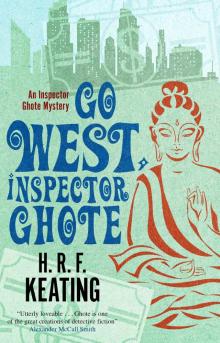 Go West, Inspector Ghote
Go West, Inspector Ghote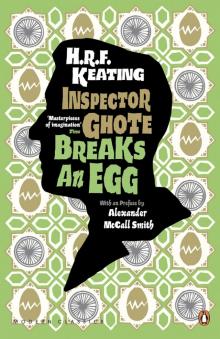 Inspector Ghote Breaks an Egg
Inspector Ghote Breaks an Egg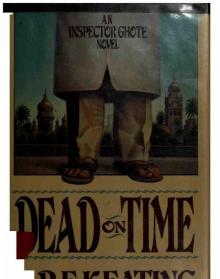 Dead on Time
Dead on Time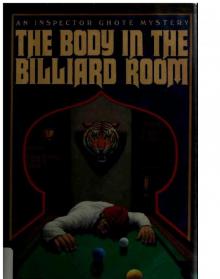 The Body in the Billiard Room
The Body in the Billiard Room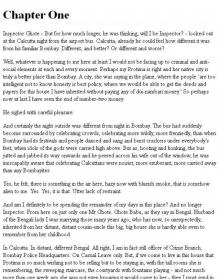 Bribery, Corruption Also
Bribery, Corruption Also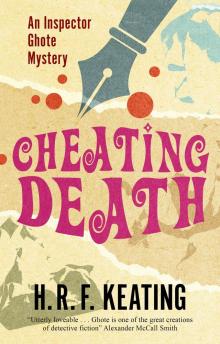 Cheating Death
Cheating Death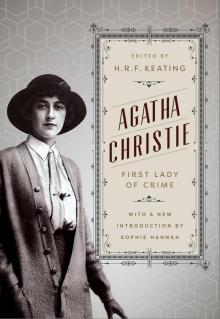 Agatha Christie
Agatha Christie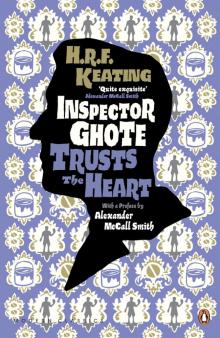 Inspector Ghote Trusts the Heart
Inspector Ghote Trusts the Heart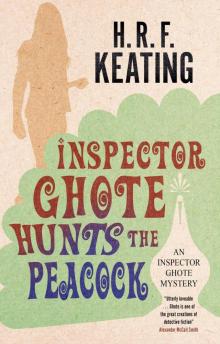 Inspector Ghote Hunts the Peacock
Inspector Ghote Hunts the Peacock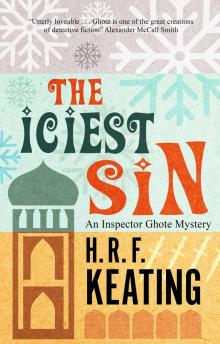 The Iciest Sin
The Iciest Sin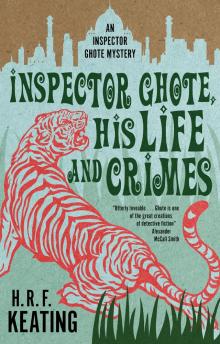 Inspector Ghote, His Life and Crimes
Inspector Ghote, His Life and Crimes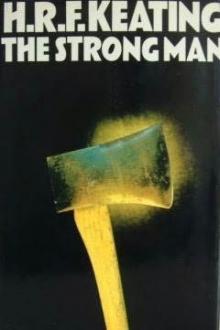 Strong Man
Strong Man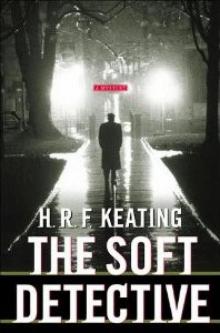 The Soft Detective
The Soft Detective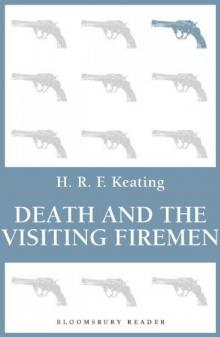 Death and the Visiting Firemen
Death and the Visiting Firemen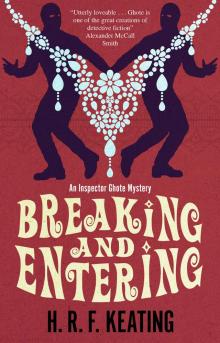 Breaking and Entering
Breaking and Entering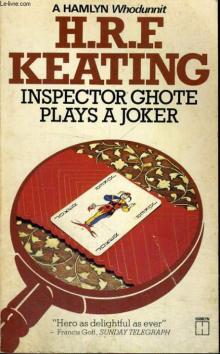 Inspector Ghote Plays a Joker
Inspector Ghote Plays a Joker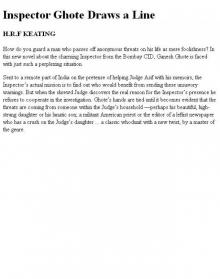 Inspector Ghote Draws a Line
Inspector Ghote Draws a Line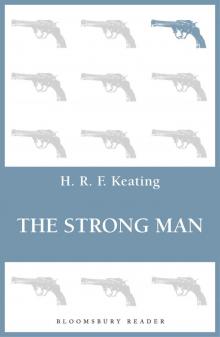 The Strong Man
The Strong Man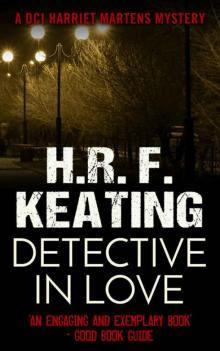 A Detective in Love (A Harriet Martens Thriller Book 2)
A Detective in Love (A Harriet Martens Thriller Book 2)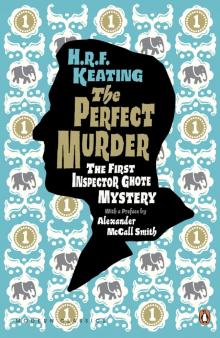 The Perfect Murder: the First Inspector Ghote Mystery
The Perfect Murder: the First Inspector Ghote Mystery Inspector Ghote's Good Crusade
Inspector Ghote's Good Crusade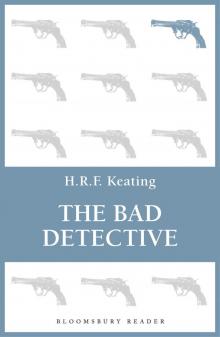 The Bad Detective
The Bad Detective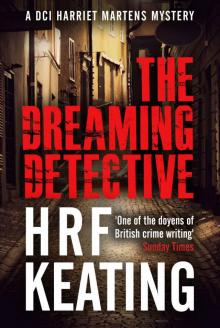 The Dreaming Detective
The Dreaming Detective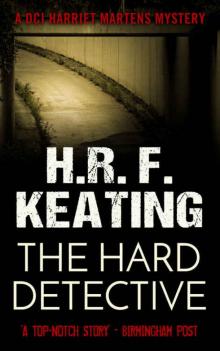 The Hard Detective (A Harriet Martens Thriller Book 1)
The Hard Detective (A Harriet Martens Thriller Book 1) The Dog It Was That Died
The Dog It Was That Died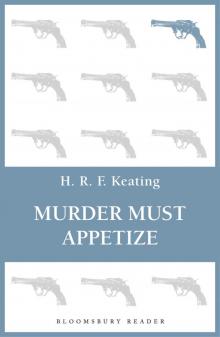 Murder Must Appetize
Murder Must Appetize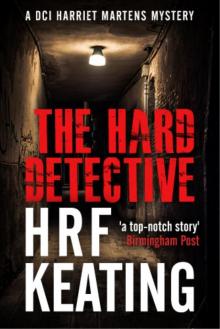 The Hard Detective
The Hard Detective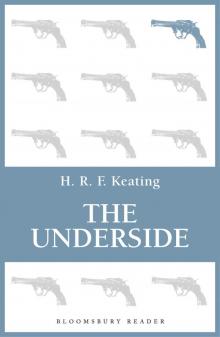 The Underside
The Underside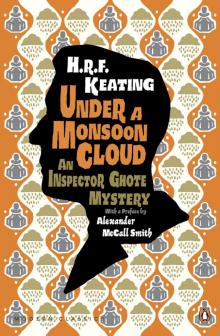 Under a Monsoon Cloud: an Inspector Ghote Mystery
Under a Monsoon Cloud: an Inspector Ghote Mystery Is Skin Deep, Is Fatal
Is Skin Deep, Is Fatal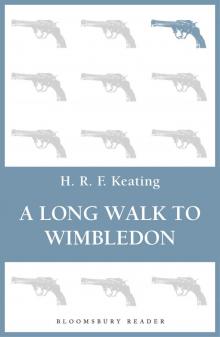 A Long Walk to Wimbledon
A Long Walk to Wimbledon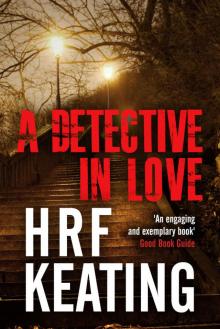 A Detective in Love
A Detective in Love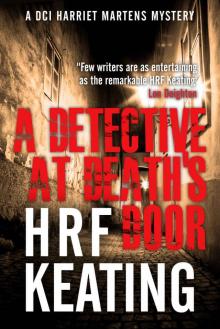 A Detective at Death's Door
A Detective at Death's Door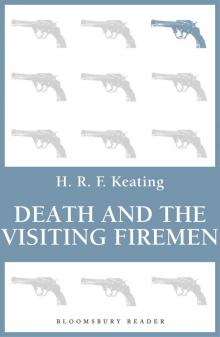 Death and the Visiting Fireman
Death and the Visiting Fireman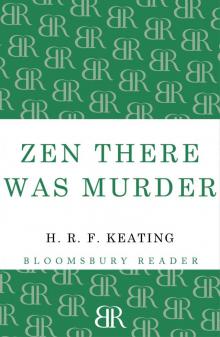 Zen there was Murder
Zen there was Murder